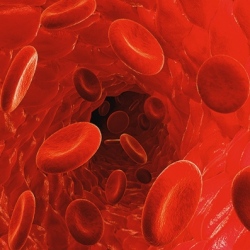
Researchers have developed a new “molecular window” technology based on nuclear magnetic resonance (NMR) that can look inside a living system to get a high-resolution profile of which molecules are present, and extract a full metabolic profile.
“Getting a sense of which molecules are in a tissue sample is important if you want to know if it’s cancerous, or if you want to know if certain environmental contaminants are harming cells inside the body,” says Professor Andre Simpson, who led research in developing the new technique.*
Simpson says there’s great medical potential for this new technique, since it can be adapted to work on existing magnetic resonance imaging (MRI) systems found in hospitals. “It could have implications for disease diagnosis and a deeper understanding of how important biological processes work,” by targeting specific biomarker molecules that are unique to specific diseased tissue.
The new approach could detect these signatures without resorting to surgery and could determine, for example, whether a growth is cancerous or benign directly from the MRI alone.
The technique could also provide highly detailed information on how the brain works, revealing the actual chemicals involved in a particular response. “It could mark an important step in unraveling the biochemistry of the brain,” says Simpson.
Overcoming magnetic distortion
Until now, traditional NMR techniques haven’t been able to provide high-resolution profiles of living organisms because of magnetic distortions from the tissue itself. Simpson and his team were able to overcome this problem by creating tiny communication channels based on “long-range dipole interactions” between molecules.
The next step for the research is to test it on human tissue samples, says Simpson. Since the technique detects all cellular metabolites (substances such as glucose) equally, there’s also potential for non-targeted discovery.
“Since you can see metabolites in a sample that you weren’t able to see before, you can now identify molecules that may indicate there’s a problem,” he explains. “You can then determine whether you need further testing or surgery. So the potential for this technique is truly exciting.”
